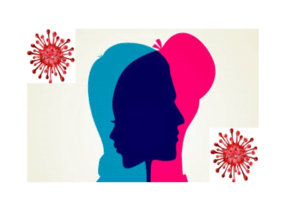COVID-19 and Gender. Women Twice at Risk
By Helen John, Gender, Social Inclusion, and Community Engagement Advisor, Integrated Health Project (IHP) Bauchi State, Nigeria

In December 2019, the world witnessed a major event which has now affected all of us in some way – the outbreak of coronavirus disease (COVID-19). Coronavirus was declared a public health emergency of international concern (PHEIC) by the World Health Organization (WHO) in late January 2020 and has since spread to many countries and territories across the globe. COVID-I9 is an illness which affects the respiratory system. According to the WHO, most people infected will experience mild illness and recover without special treatment. However, older people and those with underlying medical issues like cardiovascular disease, diabetes, chronic respiratory disease, and cancer are more at-risk and may become more seriously ill.
Disease outbreaks affect women and men differently, and pandemics make existing inequalities for women, girls and discrimination of other marginalized groups such as persons with disabilities and those in extreme poverty, worse. This needs to be carefully considered, given the different impacts surrounding detection and access to treatment for women and men.
Policies and public health efforts have not addressed the gendered impacts of disease outbreaks[1]. Recognizing that disease outbreaks affect women and men differently is a fundamental first step to understanding the primary and secondary effects of a health emergency on different individuals and communities, and for creating effective, equitable policies and interventions.
Apart from the direct impacts of the disease, as is often the case in times of a pandemic, resources are funneled away from sexual and reproductive health services towards targets perceived to be more pressing[2]. In such instances, women may find it hard to access much needed maternal health services given that all services are being directed to essential medical needs. Availability of contraception and services for other needs may also become disrupted. On the other hand, the very strategies that are needed to battle the disease – isolation, social distancing, restricted movement – have also been linked to other social and health risks such as gender-based violence from intimate partners and persons in positions of power. Coupled with this, referral services are likely to decrease leaving people in need of medical, psychosocial, protection, legal, and economic assistance at a loss.
In my opinion, there will be many undesired effects of COVID-19. This is echoed in what we are seeing regularly from news sources and research around the world. In Nigeria, I believe we could see many unplanned pregnancies due to limited family planning commodities, fear of visiting health facilities in general so as not to be infected by the virus, and malnutrition as families may not have access to the accustomed financial or food resources. These are just a few among many potential issues.
If the response to disease outbreaks such as COVID-19 are to be effective and not perpetuate gender and health inequities, it is important that gender norms, roles, and relations that influence women’s and men’s differential vulnerability to infection, exposure to pathogens, and treatment received, as well as how these may differ among different groups of women and men (young, old, different social and economic statuses, persons with disabilities, persons of different sexual and gender identities, persons of different religious or ethnic groupings, etc.), are considered and addressed.
Governments, both national and international, should consider the sex and gender ramifications of the COVID-19 outbreak, both directly and indirectly, and conduct an analysis of the gendered impacts of the multiple outbreaks, incorporating the voices of women on the front lines of the response to COVID-19 and of those most affected by the disease within preparedness and response policies or practices going forward. A recent technical brief from UNFPA, COVID-19: A Gender Lens, highlights some of these key messages and recommendations[3].
Our ability to bounce back from this crisis is dependent on how we include everyone equally-men, women, people with disability, the elderly, adolescents and youth, the poor, and other marginalized groups. If we actively include and listen to those affected, bring those voices forward, and look at the evidence, chances are that our response as individuals, communities, countries, and global partners will be more responsive to meet needs and make us all more resilient to future shocks.
As a woman and as a public health professional working in gender, I come across many marginalized and neglected persons in the normal course of my work, and the inherent humanity necessary to effect sustainable gender-inclusive change requires a strong degree of physical and emotional proximity to the populations I work with and serve. This pandemic has made me acutely aware of my own susceptibility to the virus, and the challenges it places on my capacity building and community engagement efforts.
[1] Smith, J. (2019). Overcoming the ‘tyranny of the urgent’: integrating gender into disease outbreak preparedness and response. Gender & Development, 27(2), 355-369.
[2] Wenham, C., Smith, J., & Morgan, R. (2020). COVID-19: the gendered impacts of the outbreak. The Lancet, 395(10227), 846-848.
[3] United Nations Population Fund. (2020). COVID-19: A Gender Lens. Retrieved from: https://www.unfpa.org/sites/default/files/resource-pdf/COVID-19_A_Gender_Lens_Guidance_Note.pdf